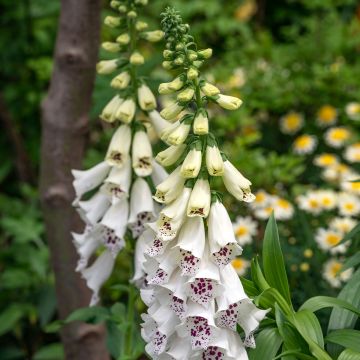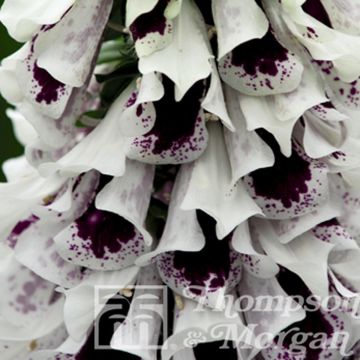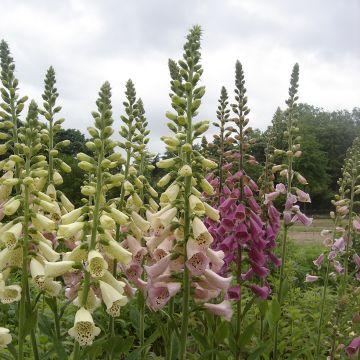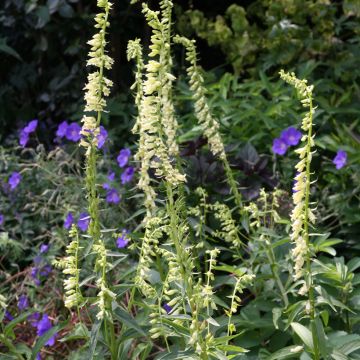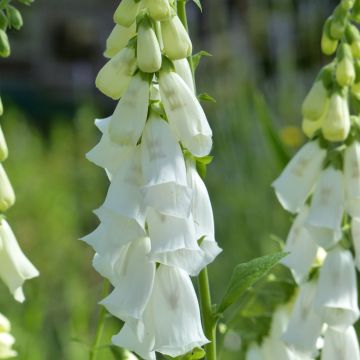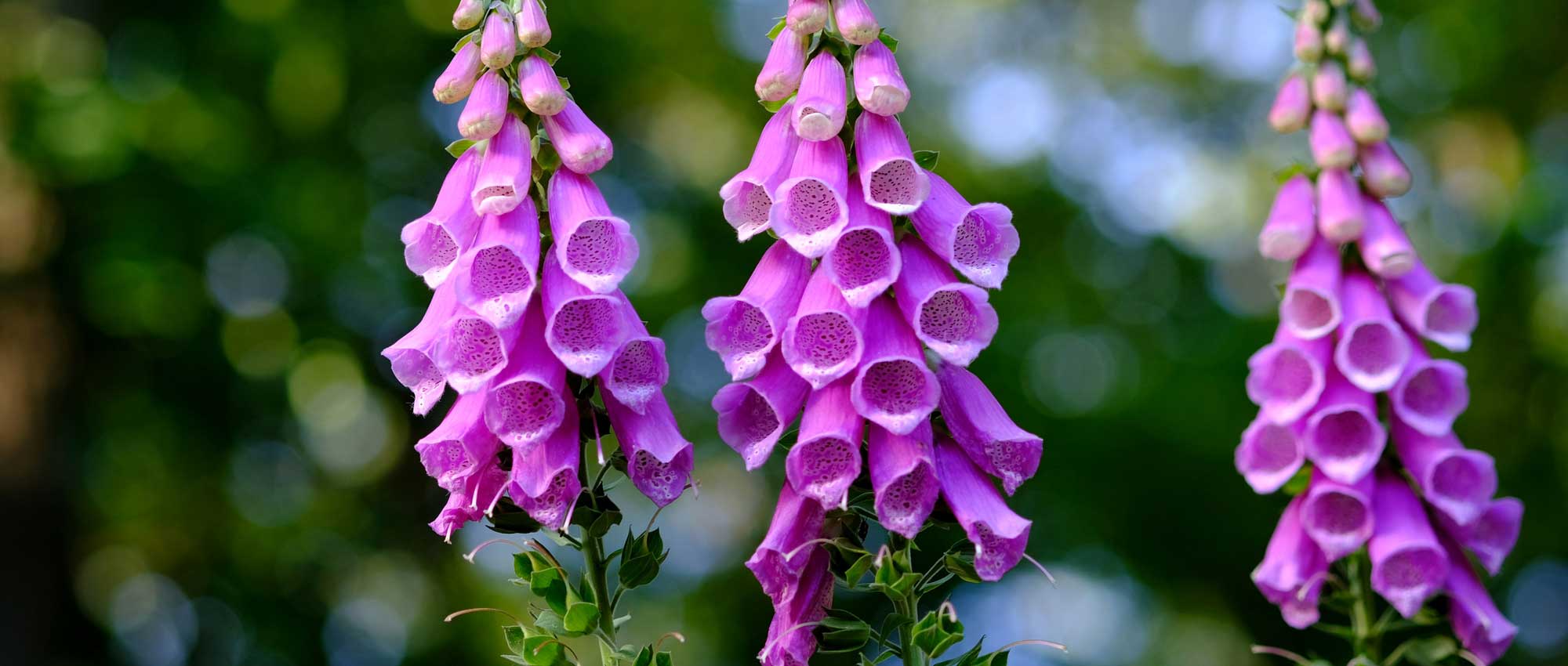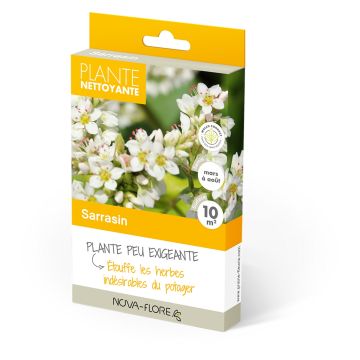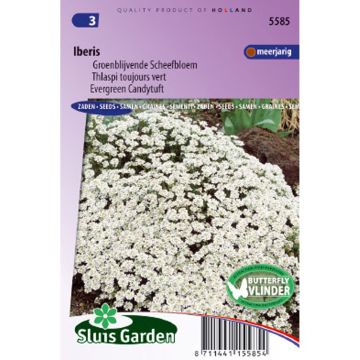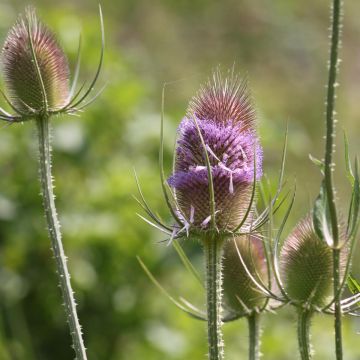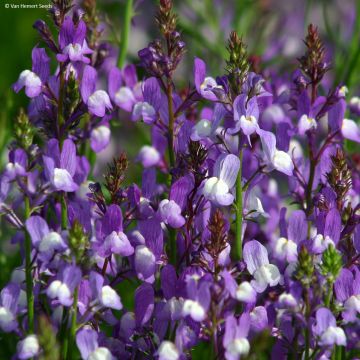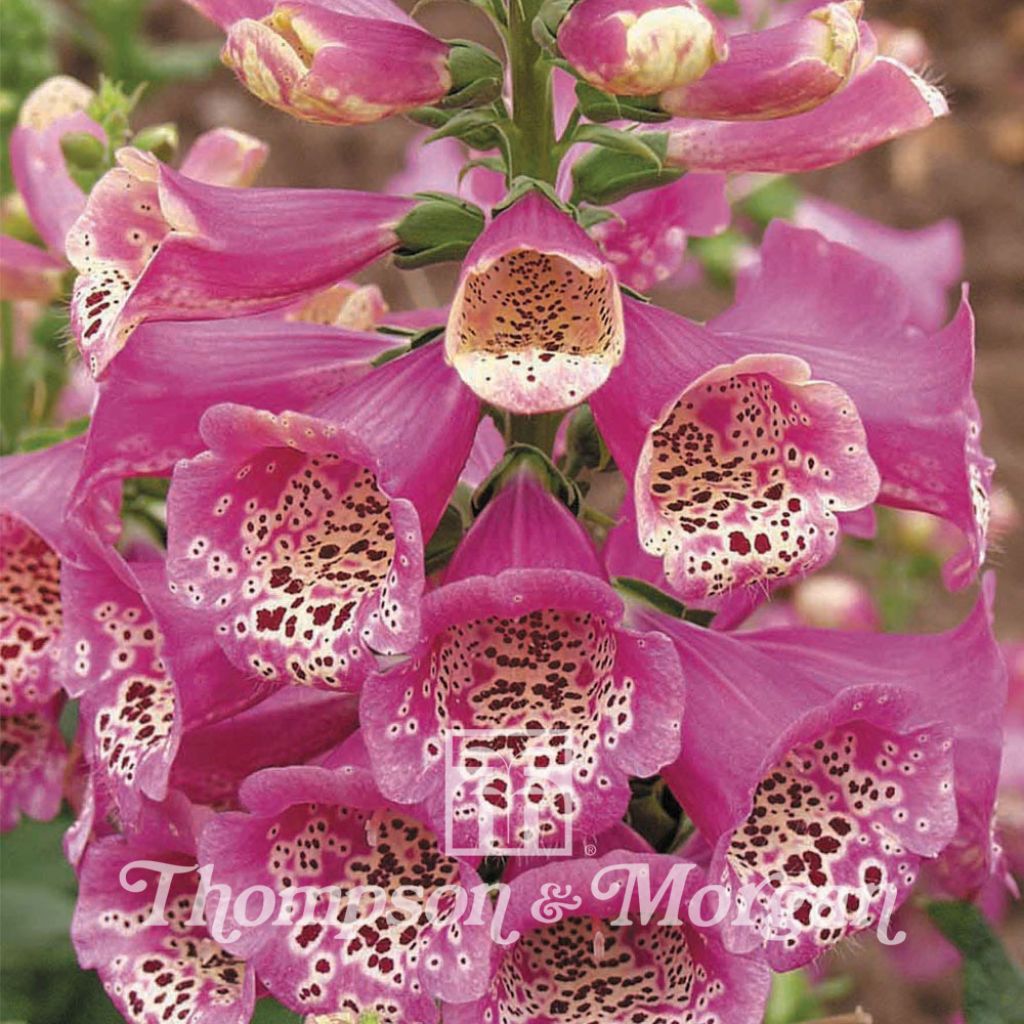

Digitale Camelot Rose F1 Hybrid
Digitalis purpurea Camelot Rose - Foxglove seeds
Digitalis purpurea Camelot Rose
Common Foxglove, Purple Foxglove, Lady's Glove
The quality of the seeds is not at fault, but the unusually mild weather followed by a sudden cold spell is slowing down the process.
sylviane claverie, 25/04/2016
Special offer!
Receive a €20 voucher for any order over €90 (excluding delivery costs, credit notes, and plastic-free options)!
1- Add your favorite plants to your cart.
2- Once you have reached €90, confirm your order (you can even choose the delivery date!).
3- As soon as your order is shipped, you will receive an email containing your voucher code, valid for 3 months (90 days).
Your voucher is unique and can only be used once, for any order with a minimum value of €20, excluding delivery costs.
Can be combined with other current offers, non-divisible and non-refundable.
Why not try an alternative variety in stock?
View all →This plant carries a 6 months recovery warranty
More information
We guarantee the quality of our plants for a full growing cycle, and will replace at our expense any plant that fails to recover under normal climatic and planting conditions.
Does this plant fit my garden?
Set up your Plantfit profile →
Description
The 'Camelot Rose' Foxglove is a variety that produces long clusters of magenta-pink flowers with a speckled purple-brown throat.
Digitalis purpurea is the wild species that we encounter in clearings, on the edges of woodlands, or simply along a path when the forest becomes less dense. It is a biennial or sometimes ephemeral perennial plant from the Scrophulariaceae family, forming a basal clump 20 to 40 cm (8 to 16in) wide in the first year. In the second year, it produces tall flower spikes that can reach 2 metres (7 feet). Then the plants naturally replace themselves through self-seeding.
The foxglove is easily recognisable by its flowers, which have given rise to its scientific and common names. The flowers are tubular corollas, 4 to 5 cm (2in) long, with fused petals that are usually pendulous with a slight upward curve that reveals the throat. The 'Camelot Rose' foxglove is a horticultural novelty that produces large magenta-pink bells with a speckled purple-brown and white throat from May to July. It blooms from the bottom to the top of the cluster and offers nectar to bees and bumblebees.
Reaching 1.20 metres (4 feet) high at maturity, the 'Camelot Rose' foxglove is ideal for creating colourful carpets in the background of flower beds or for delineating different areas in small gardens. It is undemanding in terms of soil, although it prefers humus-bearing soil. It likes moist conditions but dislikes waterlogged soil. It can be positioned in partial shade on the edge of woodlands, in sparsely populated woods, or in an alpine garden alongside colourful astilbes or masterworts.
The foxglove flower is surrounded by a notorious reputation due to its toxicity. Legends attribute it with magical properties, both white and black, all related to the presence of digitalin in all parts of the plant. It was later discovered to be a powerful heart stimulant which is still used in the pharmaceutical industry, in tiny doses.
Attention, these seeds are reserved for highly experienced gardeners who are accustomed to sowing very fine seeds. These seeds are as fine as dust and barely visible to the naked eye.
Flowering
Foliage
Plant habit
Safety measures
Botanical data
Digitalis
purpurea
Camelot Rose
Scrophulariaceae
Common Foxglove, Purple Foxglove, Lady's Glove
Cultivar or hybrid
ingestion
Cette plante est toxique si elle est ingérée volontairement ou involontairement.
Ne la plantez pas là où de jeunes enfants peuvent évoluer, et lavez-vous les mains après l'avoir manipulée.
Pensez à conserver l'étiquette de la plante, à la photographier ou à noter son nom, afin de faciliter le travail des professionnels de santé.
Davantage d'informations sur https://plantes-risque.info
Other Foxglove - Digitalis seeds
View all →Planting and care
Sowg indoors from March to May in a mixture of compost and garden soil. Gently press the seeds to the surface of the substrate as they need light to germinate. Keep them constantly moist but not waterlogged at a temperature of 20°C. It will be two to four weeks before the young seedlings appear. When they are strong enough to handle, transfer them to pots and gradually acclimatise to outdoor conditions. You can sow where they are to flower from May to June when all risk of frost is gone or at the end of the season from September to October in a prepared soil. Make sure to keep the soil moist. Thin out your plants to about 30 cm (12in) apart.
Sowing period
Intended location
Planting & care advice
-
, onOrder confirmed
Reply from on Promesse de fleurs
Similar products
Haven't found what you were looking for?
Hardiness is the lowest winter temperature a plant can endure without suffering serious damage or even dying. However, hardiness is affected by location (a sheltered area, such as a patio), protection (winter cover) and soil type (hardiness is improved by well-drained soil).

Photo Sharing Terms & Conditions
In order to encourage gardeners to interact and share their experiences, Promesse de fleurs offers various media enabling content to be uploaded onto its Site - in particular via the ‘Photo sharing’ module.
The User agrees to refrain from:
- Posting any content that is illegal, prejudicial, insulting, racist, inciteful to hatred, revisionist, contrary to public decency, that infringes on privacy or on the privacy rights of third parties, in particular the publicity rights of persons and goods, intellectual property rights, or the right to privacy.
- Submitting content on behalf of a third party;
- Impersonate the identity of a third party and/or publish any personal information about a third party;
In general, the User undertakes to refrain from any unethical behaviour.
All Content (in particular text, comments, files, images, photos, videos, creative works, etc.), which may be subject to property or intellectual property rights, image or other private rights, shall remain the property of the User, subject to the limited rights granted by the terms of the licence granted by Promesse de fleurs as stated below. Users are at liberty to publish or not to publish such Content on the Site, notably via the ‘Photo Sharing’ facility, and accept that this Content shall be made public and freely accessible, notably on the Internet.
Users further acknowledge, undertake to have ,and guarantee that they hold all necessary rights and permissions to publish such material on the Site, in particular with regard to the legislation in force pertaining to any privacy, property, intellectual property, image, or contractual rights, or rights of any other nature. By publishing such Content on the Site, Users acknowledge accepting full liability as publishers of the Content within the meaning of the law, and grant Promesse de fleurs, free of charge, an inclusive, worldwide licence for the said Content for the entire duration of its publication, including all reproduction, representation, up/downloading, displaying, performing, transmission, and storage rights.
Users also grant permission for their name to be linked to the Content and accept that this link may not always be made available.
By engaging in posting material, Users consent to their Content becoming automatically accessible on the Internet, in particular on other sites and/or blogs and/or web pages of the Promesse de fleurs site, including in particular social pages and the Promesse de fleurs catalogue.
Users may secure the removal of entrusted content free of charge by issuing a simple request via our contact form.
The flowering period indicated on our website applies to countries and regions located in USDA zone 8 (France, the United Kingdom, Ireland, the Netherlands, etc.)
It will vary according to where you live:
- In zones 9 to 10 (Italy, Spain, Greece, etc.), flowering will occur about 2 to 4 weeks earlier.
- In zones 6 to 7 (Germany, Poland, Slovenia, and lower mountainous regions), flowering will be delayed by 2 to 3 weeks.
- In zone 5 (Central Europe, Scandinavia), blooming will be delayed by 3 to 5 weeks.
In temperate climates, pruning of spring-flowering shrubs (forsythia, spireas, etc.) should be done just after flowering.
Pruning of summer-flowering shrubs (Indian Lilac, Perovskia, etc.) can be done in winter or spring.
In cold regions as well as with frost-sensitive plants, avoid pruning too early when severe frosts may still occur.
The planting period indicated on our website applies to countries and regions located in USDA zone 8 (France, United Kingdom, Ireland, Netherlands).
It will vary according to where you live:
- In Mediterranean zones (Marseille, Madrid, Milan, etc.), autumn and winter are the best planting periods.
- In continental zones (Strasbourg, Munich, Vienna, etc.), delay planting by 2 to 3 weeks in spring and bring it forward by 2 to 4 weeks in autumn.
- In mountainous regions (the Alps, Pyrenees, Carpathians, etc.), it is best to plant in late spring (May-June) or late summer (August-September).
The harvesting period indicated on our website applies to countries and regions in USDA zone 8 (France, England, Ireland, the Netherlands).
In colder areas (Scandinavia, Poland, Austria...) fruit and vegetable harvests are likely to be delayed by 3-4 weeks.
In warmer areas (Italy, Spain, Greece, etc.), harvesting will probably take place earlier, depending on weather conditions.
The sowing periods indicated on our website apply to countries and regions within USDA Zone 8 (France, UK, Ireland, Netherlands).
In colder areas (Scandinavia, Poland, Austria...), delay any outdoor sowing by 3-4 weeks, or sow under glass.
In warmer climes (Italy, Spain, Greece, etc.), bring outdoor sowing forward by a few weeks.






























